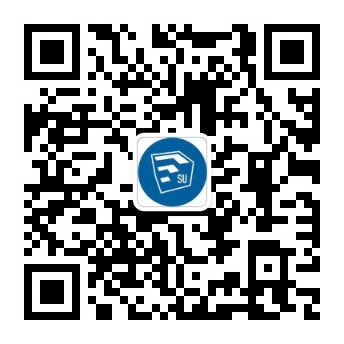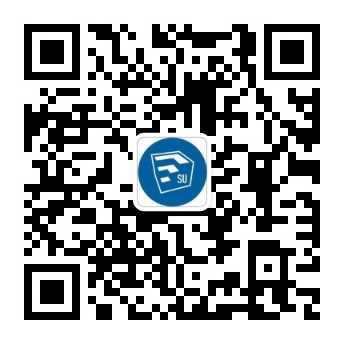热门文档
- 2023-05-14 09:26:34 2022年二建《施工管理》考试真题及解析
- 2023-05-08 19:00:07 013.甘特图
- 2023-05-08 19:40:52 6费用清单预算活动策划
- 2023-05-08 21:46:42 人事动态及费用资料表
- 2023-05-05 23:02:28 毕业答辨PPT模板免费下载(64)
- 2023-05-07 10:17:33 合伙人协议(多人)
- 2023-05-07 09:49:53 技术转让合同(6)
- 2023-05-10 22:20:57 11建筑工程钢结构工程监理细则
- 2023-05-07 09:57:20 劳动合同书(乡镇企业使用)
- 2023-05-14 09:06:57 2022(2)年二建《机电实务》考试真题及解析
- 2023-05-12 22:40:52 单页简历 (89)
- 2023-05-10 23:42:47 外墙外保温工程监理实施细则

1、本文档共计 28 页,下载后文档不带水印,支持完整阅读内容或进行编辑。
2、所有文档标识价格只是收集/整理所需费用,并不意味着购买了版权,文档版权归原作者或出版社所有,文档仅供阅读交流使用,不得用于其他商业用途(如 [转卖]进行直接盈利或[编辑后售卖]进行间接盈利)。
3、本站所有内容均由合作方或网友上传,本站不对文档的完整性、权威性及其观点立场正确性做任何保证或承诺!文档内容仅供阅读交流使用,付费前请自行鉴别。
4、如文档内容存在违规,或者侵犯商业秘密、侵犯著作权、版权等,请立即联系我们,我们会第一时间进行删除处理,联系QQ362527402。
2、所有文档标识价格只是收集/整理所需费用,并不意味着购买了版权,文档版权归原作者或出版社所有,文档仅供阅读交流使用,不得用于其他商业用途(如 [转卖]进行直接盈利或[编辑后售卖]进行间接盈利)。
3、本站所有内容均由合作方或网友上传,本站不对文档的完整性、权威性及其观点立场正确性做任何保证或承诺!文档内容仅供阅读交流使用,付费前请自行鉴别。
4、如文档内容存在违规,或者侵犯商业秘密、侵犯著作权、版权等,请立即联系我们,我们会第一时间进行删除处理,联系QQ362527402。
2013年6月大学英语四级考试真题及答案详解Total score:710Total time allowed:125 minutes特注:2013年6月大学四级考试采用多题多卷形式,本试卷含两套写作题,考生可以任选其一。Part I Writing(多题多卷写作题1)(30 minutes)Directions:For this part,you are allowed 30 minutes to write a short essay.You should start youressay with a brief description of the picture and then express your views on the importance ofdoing small things before undertaking something big.You should write at least 120 words but nomore than 180 words.If you can empty the dustbinhere.you can do anything!0ad.【m a bit worriedPart I Writing(多题多卷写作题2)(30 minutes)Directions:For this part,you are allowed 30 minutes to write a short essay.You should start youressay with a brief description of the picture and then express your views on the importance ofreading literature.You should write at least 120 words but no more than 180 words.Just think of it as if you're readinga long text-message.Part II Reading Comprehension(Skimming and Scanning)(15 minutes)Directions:In this part,you will have 15 minutes to go over the passage quickly and answer thequestions on Answer Sheet 1.For questions 1-7,choose the best answer from the four choicesmarked A),B),C)and D).For questions 8-10,complete the sentences with the information givenin the passage.Can Digital Textbook Truly Replace the Print Kind?The shortcomings of traditional print edition textbooks are obvious:For starters they're heavy,with the average physics textbook weighing 3.6 pounds.They're also expensive,especially whenyou factor in the average college student's limited budget,typically costing hundreds of dollarsevery semester.But the worst part is that print version of textbooks are constantly undergoing revisions.Many professors require that their students use only the latest versions in the classroom,essentially rendering older texts unusable.For students,it means they're basically stuck with afour pound paper-weight that they can't sell back.Which is why digital textbooks,if they live up to their promise,could help ease many ofthese shortcomings.But till now,they've been something like a mirage (in the distance,more like a hazy dream than an actual reality.Imagine the promise:Carrying all yourtextbooks in a 1.3 pound iPad?It sounds almost too good to be true.But there are a few pilot schools already making the transition (over to digital books.Universities like Comell and Brown have jumped onboard.And one medical program at theUniversity of California,Irvine,gave their entire class iPads with which to download textbooksjust last yearBut not all were eager to jump aboard."People were tired of using the iPad textbook besides using it for reading"says Kalpit Shah,who will be going into his second year at Irvine's medical program this fall."They weren't usingit as a source of communication because they couldn't read or write in it.So a third of the peoplein my program were using the iPad in class to take notes,the other third were using laptops andthe last third were using paper and pencil."The reason it hasn't caught on yet,he tells me,is that the functionality ofe-edition textbooksis incredibly limited,and some students just aren't motivated to leam new study behavior.But a new application called Inkling might change all that.The company just released anupdated version last week,and it'll be utilized in over 50 undergraduate and graduate classroomsthis coming school year."Digital textbooks are not going to catch on,"says Inkling CEO Matt Maclnnis as he's givingme a demo (over coffee."What I mean by that is the current perspective of the digitaltextbook is it's an exact copy of the print book.There's Course Smart,etc.,these guys who takeany image of the page and put it on a screen.If that's how we're defining digital textbooks,there'sno hope of that becoming a mainstream product."He calls Inkling a platform for publishers to build rich multimedia content from the groundup,with a heavy emphasis on real-world functionality.The traditional textbook merely serves as askeleton.At first glance Inkling is an impressive experience.After swiping ()into the iPad app用软件),which you can get for free here,he opens up a few different types of textbooks..Up first is a chemistry book.The boot time is pretty fast,and he navigates through (afew chapters before swiping into a fully rendered 3D molecule that can be spun around to view itsvarious building blocks."Publishers give us all of the source media,artwork,videos,"he says,"We help them think through how to actually build something for this platform."Next he pulls up a music composition textbook,complete with playable demos.It's a leamingexperience that attacks you from multiple sensory directions.It's clear why this would besomething a music major would love.But the most exciting part about Inkling,to me,is its notation system.Here's how itworks!When you purchase a used print book,it comes with its previous owner's highlights andnotes in the margins.It uses the experience of someone who already went through the class to helpimprove your reading(how much you trust each notation is obviously up to you).But with Inkling,you can highlight a piece of content and make notes.Here's where thingsget interesting,though:If a particularly important passage is highlighted by multiple Inkling users,that information is stored on the cloud and is available for anyone reading the same textbook tocome across.That means users have access to notes from not only their classmates and Facebookfriends,but anyone who purchased the book across the country.The best comments are then sorteddemocratically by a voting system,meaning that your social learning experience is shared with thebest and brightest thinkers.As a bonus,professors can even chime in on discussions.They'll be able to answerthe questions of students who are in their class directly via the interactive book.Of course,Inkling addresses several of the other shortcomings in traditional print as well.Textbook versions are constanly updated,motivating publishers by minimizing production costs(the big ones like McGraw-Hill are already onboard).Furthermore,students will be able topurchase sections of the text instead of buying the whole thing,with individual chapters costing aslittle as $2.99.There are,however,challenges."It takes efforts to build each book,"Maclnnis tells me.And it's clear why.Each interactive textbook is a media-heavy experience built from the ground up,and you cantell that it takes a respectable amount of manpower to put together each one.For now the app is also iPad-exclusive,and though a few of these educational institutions aregiving the hardware away for free,for other students who don't have such a luxury it's an addedlayer of cost-and an expensive one at that.But this much is clear.The traditional textbook model is and has been broken for quite sometime.Whether digitally interactive ones like Inkling actually take off or not remains to be seen,and we probably won't have a definite answer for the next few years.However the solution to any problem begins with a step in a direction.And at least for now,that hazy mirage in the distance?A little more tangible(可触摸的),a little less of a dream.1.The biggest problem with traditional print textbooks is thatA)they are not reused once a new edition comes outB)they cost hundreds of dollars every semesterC)they are too heavy to carry aroundD)they take a longer time to revise2.What does the author say about digital textbooks?




请如实的对该文档进行评分-
-
-
-
-
0 分